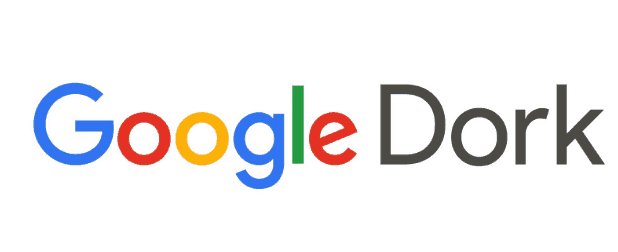Mastering Google Dorking: Discovering Web Vulnerabilities
Harnessing the Power of Advanced Search Techniques for Enhanced Cybersecurity

Google, in its essence, serves as the digital realm’s foremost gateway. While its surface is familiar to most as a user-friendly search engine, beneath lies a powerful tool known as ‘Google Dorking.’ With the correct queries, one can unveil a world of information, including potential security vulnerabilities in websites. This article explores the nuances of Google Dorking, highlighting its importance and potential impact on cybersecurity and the realm of bug bounty hunting.
The Art and Science of Google Dorking:
Delving deep into the world of Google Dorking feels akin to merging the precision of a scientist with the creativity of an artist. While on the surface, it might seem like mere advanced search tactics, there’s a deeper confluence of understanding both the technology of search engines and the vast, intertwined structures of the web.
Google Dorking transcends traditional search methods. It requires one to think like the very architects of the websites they are probing, understanding the common file structures, naming conventions, and potential oversights that even experienced webmasters might commit. Imagine a vast digital city. While most visitors are content exploring its main streets and attractions, a Google Dorking expert navigates its hidden alleys, underground passages, and overlooked doorways, seeking information most people wouldn’t even know existed.
Beyond the mere mechanics of crafting search queries, Google Dorking embodies a philosophy. It’s about understanding the footprint of data on the internet—knowing that every piece of information, whether purposefully or accidentally revealed, leaves a trace. This mindset is pivotal. Websites, after all, are human-made entities, and humans, no matter how proficient, are prone to errors, lapses in judgment, or simple oversights. Google Dorking seeks out these very imperfections, not with malice, but with an intent to understand, highlight, and often, rectify.
In the realm of cybersecurity, this practice becomes even more profound. With the web expanding at an unprecedented rate, the vulnerabilities it might harbor expand concurrently. Here, Google Dorking serves not just as a tool but as a mindset – a proactive approach to uncover, understand, and secure the endless corridors of our digital realm. The dance between discovering vulnerabilities and patching them is continuous, and in this rhythm, Google Dorking emerges as a critical player.
How Google Dorking Works:
At its core, Google Dorking is a method of utilizing advanced search queries to unearth specific information from Google’s vast index. It exploits Google’s powerful search parameters to pinpoint data that might not be immediately accessible through regular searches. This technique, while tremendously beneficial for researchers and cybersecurity professionals, can also be misused by malicious actors to find exposed sensitive data or vulnerabilities on web platforms.
What is Google Dorking? Google Dorking, sometimes colloquially referred to as “Google hacking,” isn’t hacking in the traditional sense. It doesn’t involve breaching systems or exploiting vulnerabilities in software. Instead, it’s about understanding and leveraging Google’s advanced search parameters to yield more precise results. This can involve anything from uncovering hidden files inadvertently left accessible on a website to identifying potential vulnerabilities in a web application’s structure.
Three Fundamental Google Dork Commands:
- site: This command restricts search results to a particular domain or website. It’s invaluable for individuals who want to focus their research on a specific web property.
- Example 1:
site:example.com– This would return results solely from the “example.com” domain. - Example 2:
site:example.com .pdf– This narrows the search to only PDF files hosted on “example.com.”
- Example 1:
- filetype: With this command, a user can search for specific file types. This can be particularly helpful in locating documents, spreadsheets, presentations, or other file types that might contain valuable information.
- Example 1:
filetype:pdf confidential– Searches for PDF files that contain the term “confidential.” - Example 2:
filetype:xls salary– Seeks out Excel files (spreadsheets) that might contain information about salaries.
- Example 1:
- inurl: This command focuses on the URLs of the search results, looking for specific terms within them. It’s especially potent for identifying specific page structures or scripts.
- Example 1:
inurl:admin– Returns results with the term “admin” in their URL, which could point to potentially sensitive admin pages. - Example 2:
inurl:login.asp– Searches for pages with “login.asp,” which could reveal login portals or perhaps outdated login scripts that are more vulnerable to breaches.
- Example 1:
When utilizing Google Dorking, it’s essential to combine and modify these commands to refine and target searches further. The depth and breadth of what one can uncover are bound by their creativity and understanding of these search parameters. However, with its capabilities come responsibilities; it’s crucial to use Google Dorking ethically and responsibly, always respecting privacy and never using it for malicious intent.
Google Dorking’s Relevance to Bug Bounty Hunters:
Bug bounty hunters are the vanguard of the digital world, seeking out vulnerabilities in systems before malicious actors can exploit them. Google Dorking, with its robust capabilities, has become an invaluable tool in their arsenal. But like any powerful tool, it is essential to understand its potential, use it judiciously, and always adhere to ethical guidelines.
The Power of Precision: Google Dorking offers an unparalleled depth of search precision. For bug bounty hunters, this can mean the difference between finding a vulnerability in hours versus days or even weeks. It allows hunters to pinpoint specific files, configurations, or pages that might be inadvertently exposed or misconfigured. Understanding the intricacies of advanced search parameters can drastically reduce the time spent looking for potential entry points or sensitive data.
A Constantly Evolving Landscape: The digital realm is in perpetual flux. Websites evolve, technologies shift, and vulnerabilities emerge. Google’s vast indexing system continually crawls the web, capturing these changes. Staying updated with the latest Google Dorking techniques can ensure that bug bounty hunters are always a step ahead, ready to identify and report the latest vulnerabilities.
Recommended Sources for Google Dorking: For those interested in delving deeper into Google Dorking, several trusted sources offer a wealth of information:
- Exploit Database’s Google Hacking Database (GHDB) – A comprehensive repository of dorks that can uncover a multitude of vulnerabilities.
- Google’s own guide to advanced operators – It’s always best to learn from the source. This guide explains how to use search operators, offering a foundational understanding.
The Ethics of Google Dorking for Bug Bounty Hunting: While Google Dorking is a potent tool, it comes with a heavy responsibility. Bug bounty hunters must ensure they’re using this tool ethically:
- Permission is Paramount: Always ensure that you have permission to probe or search a site. Many sites have explicit guidelines about what is and isn’t allowed in their bug bounty programs. Adhering to these guidelines ensures that you’re operating within legal and ethical boundaries.
- Respect Privacy: Just because data is accessible doesn’t mean it should be accessed. If personal or sensitive data is uncovered during a search, it’s a bug bounty hunter’s responsibility to report it without exploiting or sharing the data.
- Educate & Report: The primary goal of a bug bounty hunter is to improve the digital ecosystem’s safety. If a vulnerability is found using Google Dorking, it should be reported promptly to the respective organization, following the proper channels.
In conclusion, Google Dorking is more than just an advanced search technique; for bug bounty hunters, it’s a pivotal skill. However, as with any powerful tool, it’s vital to use it ethically, responsibly, and always with the intent of making the digital world a safer place.
The Digital Magnifying Glass for Tomorrow’s Cybersecurity:
In the ever-evolving landscape of digital technology, Google Dorking stands out as a testament to both innovation and the need for continuous vigilance. It highlights how tools designed for benign purposes, like refining our everyday search queries, can be transformed into powerful instruments in the hands of those looking to secure or exploit the vast expanse of the internet.
The world of cybersecurity is akin to a relentless game of cat and mouse, with defenders and attackers continually adapting to each other’s moves. In this dynamic arena, Google Dorking is not just a tool; it’s a symbol. It represents the idea that understanding and harnessing even the most commonplace resources can provide invaluable insights and advantages in this digital tug-of-war.
For bug bounty hunters, Google Dorking has amplified their ability to find and report vulnerabilities, acting as a digital magnifying glass that brings into focus the minutiae often overlooked. But it’s more than just about finding vulnerabilities. It’s about understanding the pulse of the digital space, predicting potential weak points, and preemptively addressing them.
Yet, as we chart our course into the future, it’s essential to remember the responsibilities that come with such power. Tools like Google Dorking must be wielded with an inherent understanding of their impact and with a commitment to ensuring that their use is always rooted in ethics, integrity, and the betterment of the digital ecosystem.
As we stand on the brink of a new era of interconnectedness, with the rise of the Internet of Things, 5G, and advancements yet to be imagined, Google Dorking reminds us of the need for continuous learning, adaptation, and the critical importance of securing the digital frontiers. After all, our collective digital future hinges on the foundation of a safe, secure, and resilient cyberspace.




